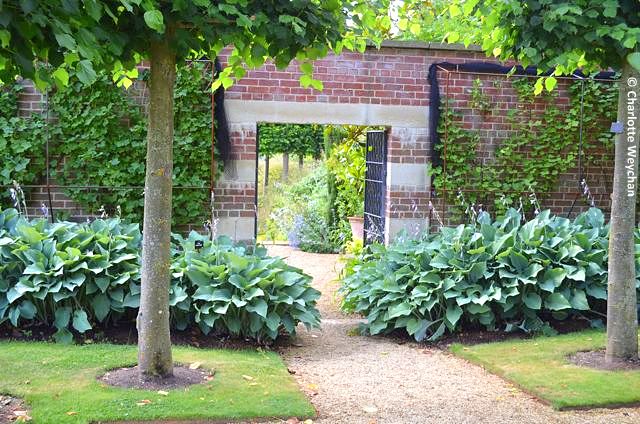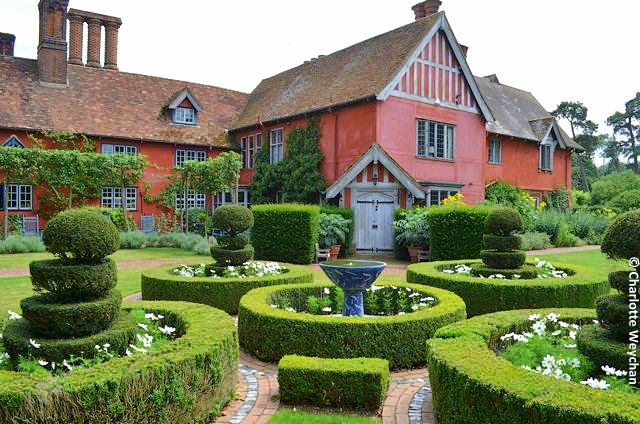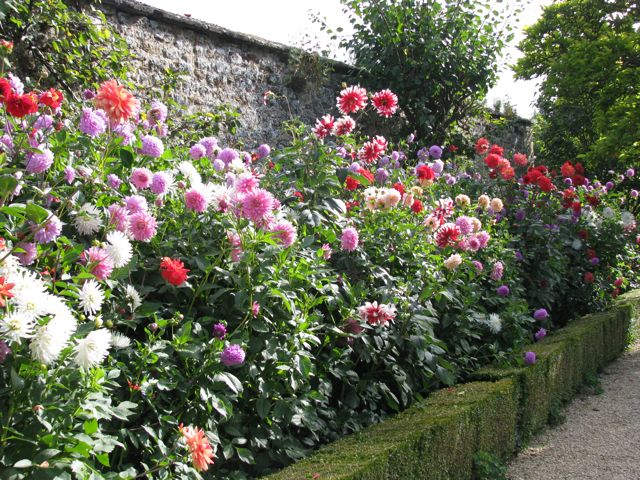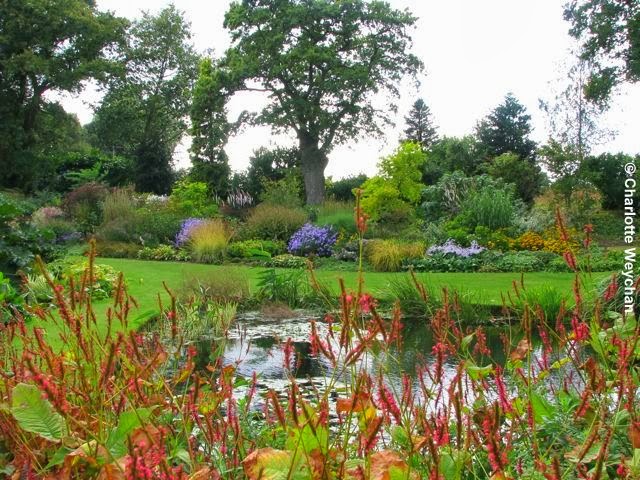![]() |
| Helmingham Hall in Suffolk - a moated 16th century property with 10-acre garden |
A late spring, followed by a heat wave in July have done little to dent the charm of the gardens at Helmingham Hall in Suffolk - certainly one of the most impressive moated properties I've visited yet on my travels. The unusual architecture of the 16th century house, still occupied by descendants of John Tollemache - the man who built it - combined with the determined efforts of Lady Xa Tollemache - who has lived here since 1975 - to redesign the 10-acre gardens adjacent to the Hall, ensure that visitors will be delighted by what they find.
![]() |
| There is a drawbridge (right) over the moat at Helmingham Hall, which is still raised every night |
The handsome house is built of brick and sits at the heart of 400 acres of parkland, where the ancient oak trees were often painted by John Constable, who lived here on the estate. Xa Tollemache knew little about gardening when she arrived at the hall, but is now well established as a garden designer. She won a gold medal at Chelsea in 1997 and since then has completed commissions at stately homes here in the UK, including Wilton House near Salisbury and Cholmondeley Castle in Cheshire. She is the brains behind the garden here and works closely with her head gardener Roy Balaam.
![]() |
| As you wander through the walled garden to the west of the house, you will glimpse the Hall |
The garden at Helmingham is divided into two main areas - to the west of the house is the moated garden, which includes the walled kitchen garden, with its fine sweet pea tunnels, seasonal borders and an immaculate parterre, flanked at one end by the Apple Walk. The walled garden also features cruciform themed herbaceous borders, planted to flower throughout the spring and summer seasons. Elsewhere in this part of the garden you will find colour-themed yew buttressed borders and the productive potager.
![]() |
| Helmingham Hall takes pride of place as a backdrop from every vantage point in the walled garden |
Closest to the house in the walled garden is the parterre (below), designed and planted as recently as 1978 with box hedging (and still looking untainted by box blight) and surrounding it on three sides is a rose garden featuring hybrid musks, planted by the former Lady Tollemache (Dinah) when she lived here. What is evident throughout the walled garden is the skill of Xa Tollemache to provide a constantly changing colour palette throughout the seasons.
![]() |
| The parterre in the moated garden was re-planted as recently as 1978 |
To the north-east of the house, the tempo changes again and it is here that the current owners have created a new series of garden rooms, in keeping with the Elizabethan house and visually effective when viewed from the upstairs rooms, with a knot garden, herb garden and rose garden, all enclosed with immaculately-clipped yew hedges. Other garden areas worth exploring are the wild flower garden and orchard and you can also wander further afield into the surrounding parkland where you will find both fallow and red deer.
![]() |
| Xa Tollemache created new knot, herb and rose gardens at Helmingham when she arrived at the house |
Helmingham Hall is open from 1 May until 15th September on Tuesdays, Wednesdays, Thursdays and Sundays from 12.00-17.00. Entrance is £6.00 for adults and £3.50 for children (free admission for HHA members). There are also two annual plant fairs, with the next one taking place on 15th September (10.30-16.00), with many specialist nurseries attending. Nearby gardens worth making the effort to see include Bressingham and Wyken Hall.


















































































































.jpg)
















